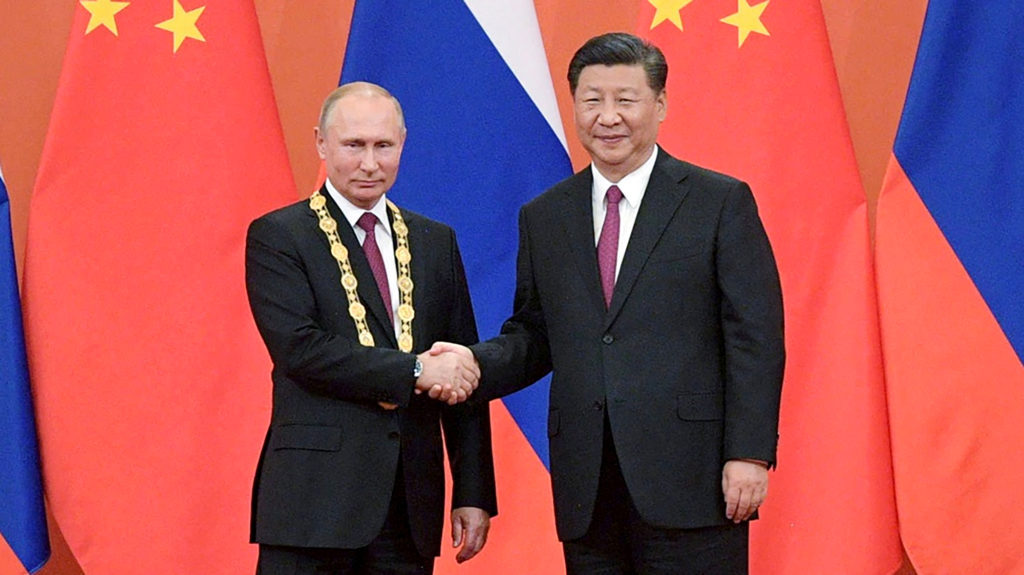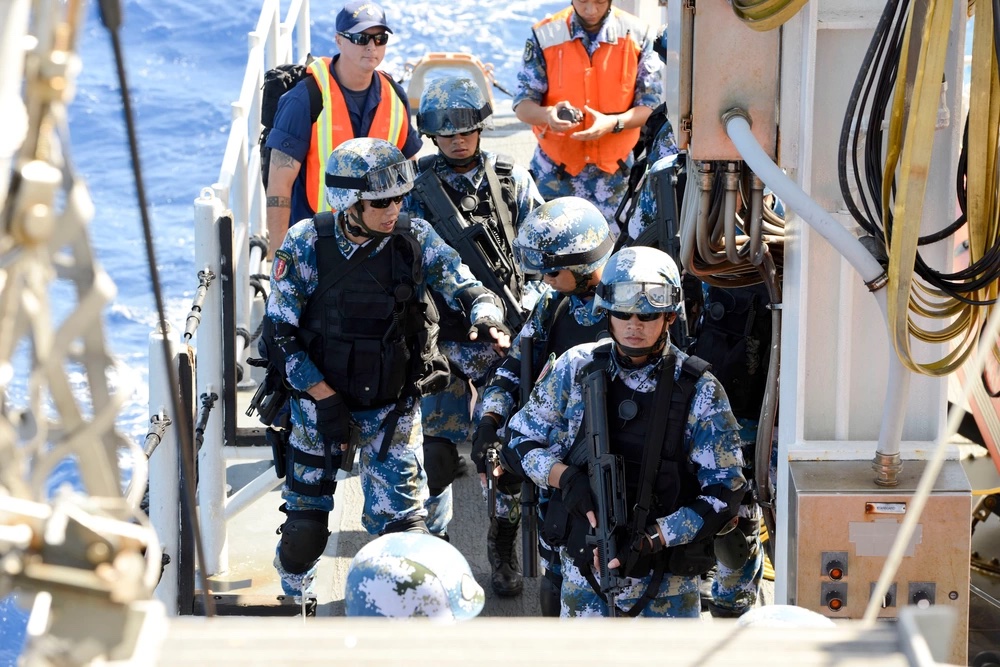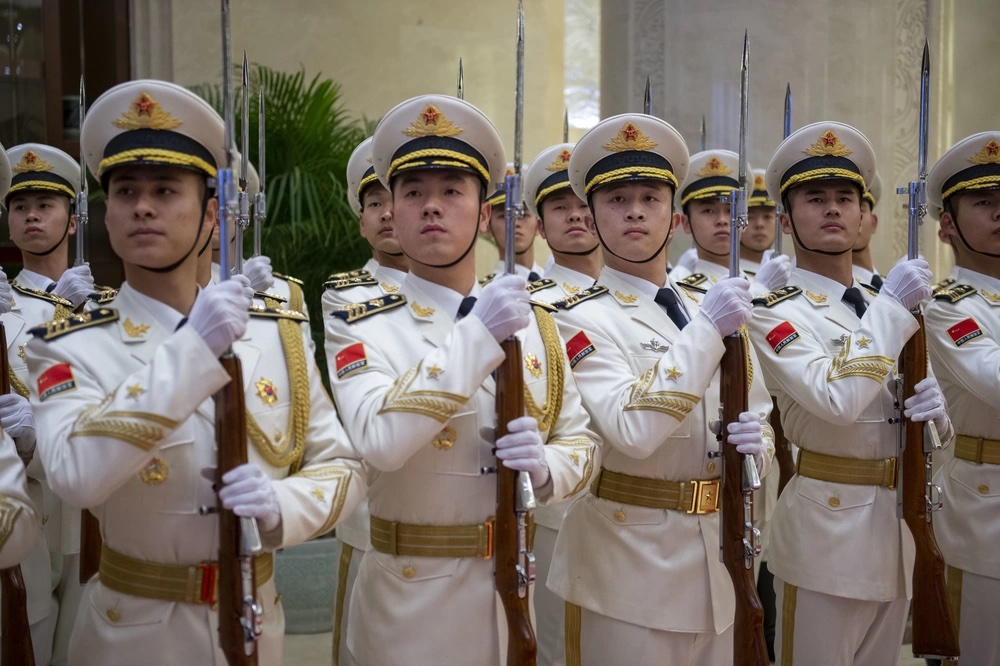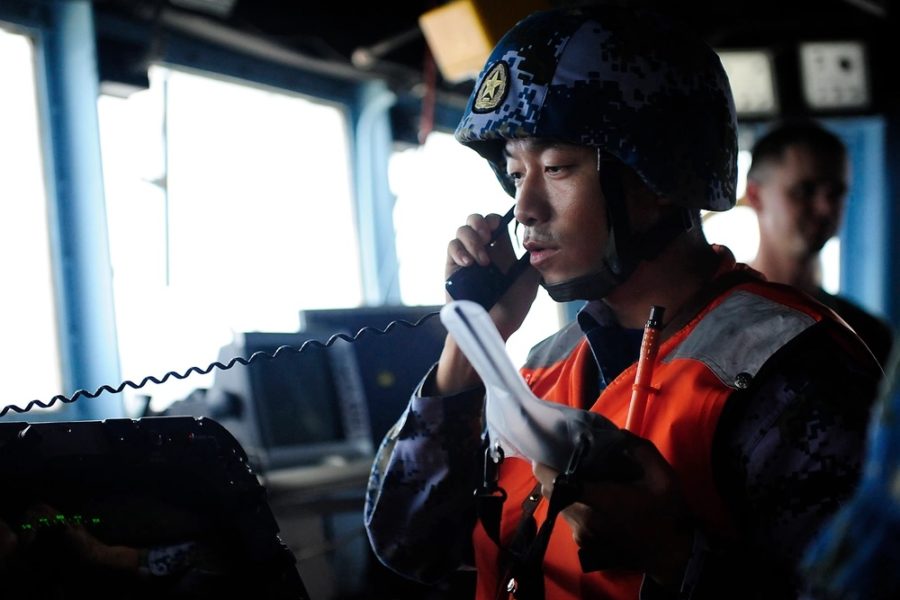The U.S. military wants to reinvent itself to prepare for a possible conflict with China, a country which many experts believe poses the greatest threat to U.S. national security. But how do Chinese leaders assess the strength of the People’s Liberation Army relative to the U.S. military? Researchers sought to answer that question in a recent report.
The RAND Corporation report is one of the first analyses to study how the PLA understands and assesses military balance, in contrast to previous research that focused on quantitative aspects, such as how many pieces of equipment the PLA has and how its capabilities compare to those of the U.S.
Specifically, the report focused on how the PLA views itself in four areas Chinese president Xi Jinping is worried about: political reliability, mobilization, fighting and winning wars, and leadership and command.
“Ours is a much more qualitative look at the PLA and a look at the way the PLA sees themselves, but it really gets to those core issues that I think are absolutely critical for these ideas the Chinese have about systems warfare,” Mark Cozad, senior international defense researcher at RAND and the lead author of the study, told Air & Space Forces Magazine. “You can have an infrastructure, you can have an architecture, but the system actually depends on those four areas that Xi was so concerned about.”
In the report, Cozad and his coauthors wrote that, despite the PLA’s increasing progress and technological sophistication in recent years, Xi’s concerns “reflect many of the worst elements of China’s political system—corruption, unwillingness to show initiative, poor cultivation of talent, and bureaucratism, among others.” And changing such an institutional culture takes time.
It was beyond the scope of RAND’s project to determine whether Chinese perceptions of the PLA’s strengths and weaknesses are correct or incorrect. Even so, the fact that Xi “does not have great confidence in the PLA’s ability to ‘fight and win’ the informatized wars that it may face in the future” may affect Chinese calculations on whether or not to use armed force against the U.S. in a future conflict, the report notes. But that does not mean the PLA would never fight.

Reliability and Leadership
Having studied the PLA for years, Cozad was aware of many of the concerns Chinese leaders feel about the PLA’s capabilities. But even for him, it was a significant moment when Xi Jinping laid out his doubts in a 2017 speech.
“What I think about most is that when the Party and the people need it, will our armed forces always adhere to the Party’s absolute leadership, will our armed forces be able to mobilize and fight winning battles, and will leaders at all levels in our armed forces be able to lead their people into battle and command in battle,” Xi said at the time.
Those doubts were “really telling” coming from Xi himself, and served to highlight deep, persistent concerns about the PLA within high-level Chinese leadership, Cozad said. That worry about political reliability is one U.S. leaders have not had to deal with since the creation of the all-volunteer force, he said.
By contrast, the largely conscript-based Chinese military is struggling to develop the same level of motivation and competence, RAND found. In particular, Xi has criticized PLA training for falling into a peacetime practice of “formalities for formalities’ sake and bureaucratism” that gets in the way of more effective, realistic training styles, according to PLA news reports.
In communist China, the question of political reliability takes on the added dimension of whether the PLA will always adhere to the “absolute leadership” of the Chinese Communist Party, to use Xi’s term. Xi feels the PLA has drifted from party objectives, so since 2014 he has repeatedly directed the military “to return to long-standing PLA political work practices by upholding CCP ideology, providing officers and soldiers with substantial political education,” and other measures, the RAND researchers wrote.
However, as top Chinese officials try to foster greater adherence to party thinking, it could interfere with their efforts to encourage greater flexibility in the ranks to respond to a dynamic battlefield. Many analysts have pointed out that the Russian military’s lack of an effective noncommissioned officer corps has hampered its invasion of Ukraine. Historically, the PLA leadership model has been similar to Russia’s.
“Things that a fairly junior NCO can do in the U.S. military are done by officers in the PLA, and sometimes fairly senior officers,” Cozad explained. “That can clog up a system, make it more inefficient and sap the creativity you need for a dynamic environment.”
In modern-day warfare, PLA leaders want to push decision-making ability down lower than it has been before, which can be difficult to square with the push for greater party orthodoxy.
“You’re telling a PLA officer to be more innovative, be more willing to stick your neck out, make decisions, be more creative,'” Cozad explained. “At the same time you’re saying ‘there is a certain way of thinking in the PLA and you need to conform to that way of thinking.’ You’re sending competing messages there.”
RAND’s observations also help remind U.S. military leaders of unquantifiable advantages they might have in an armed conflict with the PLA.
“That’s one way that I hope this report gets looked at and interpreted: trying to find out what this tells us about areas of advantage that we may not always think about,” Cozad said. “I do see a lot of discussions in the United States where we focus on numbers and systems, which are all extremely important, but we focus less on those intangibles that really tie all those things together into an effective warfighting system.”

Mobilizing and Fighting
Training is another intangible area that is vital for an effective military—Cozad said the PLA has attempted to emulate the large-scale training programs the U.S. military enjoys, like the Air Force’s Red Flag series of exercises, but without as much success.
Indeed, one of the chief criticisms cited in official PLA press is the problem of “lax and untruthful styles of training and preparation for war,” the RAND report notes. While new training regulations implemented in 2018 were meant to increase discipline and use inspection teams to check for compliance to standards, the problem persists today.
“Ultimately, Xi assessed that one of the most significant factors holding back PLA training was the lack of competence among Party committees and commanders in carrying out this strategically important and critical task” for fighting modern war, the report authors wrote.
One of the advantages of the U.S. military’s large-scale exercises is that they can help foster joint cohesion between U.S. service branches and their foreign allies. Joint warfare is still a weak spot in the PLA’s preparation to fight a modern conflict.
“Most notably, the criticism from PLA sources regarding current PLA training is that there are shortcomings in the effective integration of joint functions, including planning, firepower, and reconnaissance capabilities,” the report states.
The Chinese Central Military Commission sought to promote jointness “in large part by reducing the PLA Army’s long-held preeminence and elevating” the PLA Air Force and Navy, the RAND authors wrote, but the development of a joint culture has been slow to take hold. Another area not progressing as fast as Chinese leaders would like is mobilization, which officials believe involves not just military units but also protecting civilian populations and infrastructure.
Perhaps the most critical issue hampering Chinese mobilization programs “is the lack of clear authorities and specification for responsibilities” in its National Defense Mobilization system, the report notes, thanks to both organizational and technological challenges.
“[T]he contradiction between the constantly evolving demand for mobilization and the imbalance in mobilization preparation is still outstanding,” the report quoted one PLA observer saying.
On top of all that, the PLA also has persistent insecurity over not having fought any wars recently.
“This lack of experience has led to warnings from some PRC observers that the PLA must be ‘soberly aware’ that because it has not been engaged in combat for over 40 years … and lags behind some other military powers in terms of the quality and combat realism of its training,’” the report authors wrote.
Cozad pointed out that while some tend to downplay U.S. military experience in Iraq and Afghanistan since it was not against a peer or near-peer military, it is more useful for training purposes than no combat at all.
“The comment that I hear is ‘Oh, we fought the JV team,’” he said. “The PLA hasn’t even fought the JV team.”

All of these issues could limit the PLA’s success in a war with the United States. Still, Cozad cautioned against underestimating the PLA in a future fight.
“We tried to be extremely cautious, because we didn’t want to write a paper that was interpreted as ‘the PLA’s no good, they’re not making any progress,’” he said.
After all, U.S. military leaders share some of the same concerns about U.S. warfighting capabilities, such as needing better joint cohesion, faster mobilization, less bureaucracy, a refreshed industrial base, and better mechanisms for attracting and retaining talent. And even if Chinese officials feel they are on the back foot in some ways, they still have a very capable military machine for U.S. planners to prepare for.
“The PLA still has a lot of stuff: a lot of bombs, a lot of planes, a lot of missiles,” Cozad said. “When they get into a situation where the elegant doesn’t work, there are a lot of ways that they can still fight. And in some cases I think those might be even more dangerous, more damaging, more devastating than the more elegant approaches that they hope to be able to enact.”
The intent of the RAND report, then, was to focus on perceptions of military strength and how those perceptions inform political calculations and deterrence.
“The Chinese have been very heavily focused on us and the way we fight, and the report highlights that they’ve taken away some very important lessons,” Cozad said. “But I hope the report highlights for our leaders those areas that we have significant advantages that we need to make sure we protect and maintain.”
